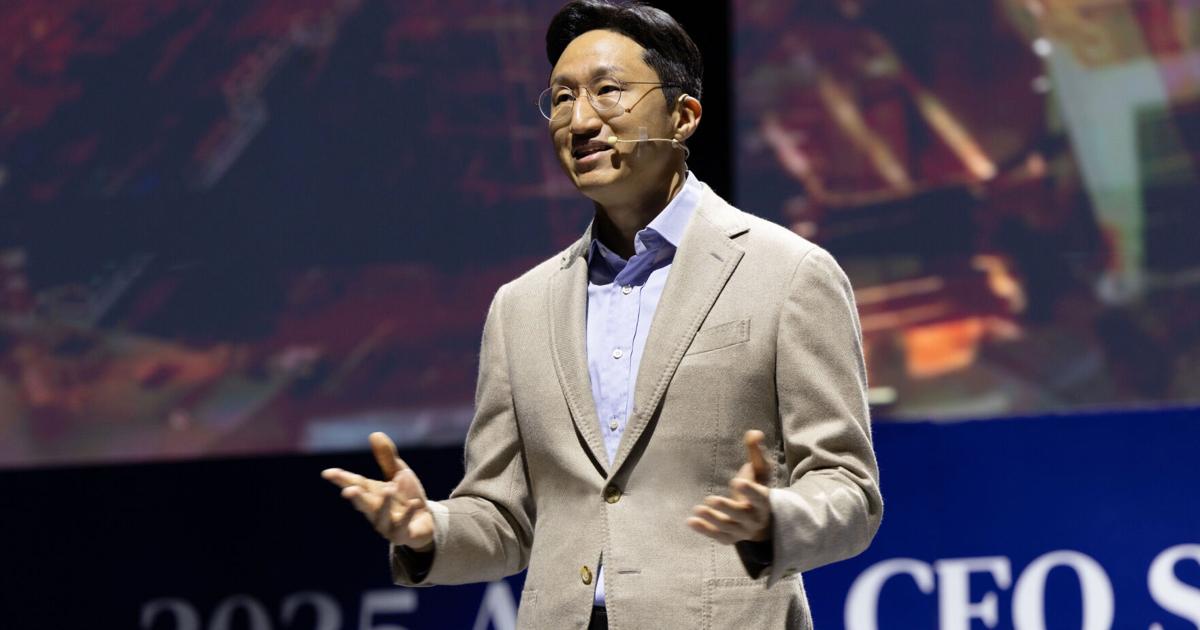Copyright opindia

When Karnataka cabinet minister Priyank Kharge questioned whether there was any “talent” in Assam or Gujarat to host semiconductor industries, he did more than just display political immaturity, he revealed the deep-seated arrogance of the Congress ecosystem that still believes India’s progress is limited to a few privileged states. His remarks were not simply a political gaffe; they were an insult to the hardworking youth of Assam, to the technological aspirations of India’s Northeast, and to the very spirit of equitable development that the Modi government and Chief Minister Himanta Biswa Sarma have been striving to achieve. Kharge’s words were not taken out of context. His recorded statement is clear: “What is there in Gujarat? Is there talent there? What is there in Assam? Is there talent there?” This was not a policy critique, it was a derisive swipe at entire populations, implying that regions outside the traditional urban-industrial belt of South India are intellectually or economically unfit for high-technology industries. Coming from the son of Congress president Mallikarjun Kharge, it epitomizes the dynastic disdain that has long alienated the Congress Party from the grassroots energy of India’s new federal development story. Earlier, we saw how @INCIndia President Shri @kharge Ji opposed conferring Bharat Ratna on Sudhakantha Dr Bhupen Hazarika, one of Assam’s greatest icons. Now, his son and Congress MLA @PriyankKharge shamelessly says there’s “no talent” in Assam — suggesting that the… pic.twitter.com/Jeygx9sV10— Pijush Hazarika (@Pijush_hazarika) October 26, 2025 Assam’s Moment of Industrial Renaissance Under Himanta Biswa Sarma’s leadership, Assam has been quietly but steadily transforming itself into the industrial and infrastructural hub of the Northeast. The Tata Group’s ₹27,000-crore semiconductor assembly and testing facility in Jagiroad, Morigaon district, is not just a business project, it’s a statement. Scheduled to begin its first phase by mid-2025, it is projected to generate over 27,000 direct and indirect jobs, making it one of the largest industrial investments in Assam’s history. This project is not a result of “arm-twisting” by the Centre, as Kharge insinuates. Rather, it’s the fruit of strategic vision, where the Northeast, long neglected under Congress rule, is being reimagined as a vital node in India’s technological and manufacturing map. The semiconductor plant aligns with Prime Minister Narendra Modi’s “Digital India” and “Aatmanirbhar Bharat” vision, aiming to make India self-reliant in semiconductor manufacturing, a sector critical for everything from smartphones to electric vehicles. For Assam, the facility represents both a technological leap and a social revolution, local youth trained for global industry, regional economies integrated into national value chains, and a new identity for the Northeast beyond tea and tourism. Himanta Biswa Sarma: The Architect of a Confident Assam The fierce response from Chief Minister Himanta Biswa Sarma was both natural and justified. His retort, calling Kharge a “first-class idiot” for insulting Assamese youth, may sound harsh to some ears, but it reflects the emotion of a leader deeply protective of his people’s dignity. Sarma’s words were not mere political rhetoric; they came from the conviction of a chief minister who has seen, firsthand, the rising potential of Assam’s youth. Son of @INCIndia President , Priyank Kharge, has insulted Assam’s youth and Assam Cong doesn’t even have the courage to condemn him.He is a FIRST CLASS IDIOT. pic.twitter.com/bNzGTtiCTs— Himanta Biswa Sarma (@himantabiswa) October 27, 2025 Sarma rightly noted, “Why shouldn’t a Northeast Chief Minister aspire for prosperity like those in the South or West? If striving for progress is desperation, so be it.” This is the essence of the new India’s federal confidence, where every state, from Gujarat to Assam, can compete on merit, innovation, and vision, not lineage or legacy. Over the past few years, Sarma’s government has aggressively pushed industrial reforms, improved law and order, streamlined land and power policies, and expanded technical education infrastructure. The Assam Startup initiative, Skill Development Mission, and collaborations with national institutions like IIT Guwahati have created fertile ground for technology-based industries to take root. These are the kinds of structural changes that Congress governments, trapped in bureaucratic inertia and caste-communal politics, failed to achieve for decades. Congress’s elitism and the old politics of entitlement Priyank Kharge’s comments are symptomatic of a deeper malaise within the Congress Party, a sense of elitist entitlement that cannot reconcile with India’s decentralized development model. His words echo the old Nehruvian mindset that viewed the Northeast as a periphery, not a partner, in India’s modernization. For decades, under Congress rule, Assam and the Northeast were politically exploited but economically abandoned. Investments flowed into select states like Karnataka and Maharashtra, while the Northeast was left to grapple with insurgency, unemployment, and infrastructural neglect. That same mindset now sneers at the idea of a semiconductor plant in Assam. But the irony is stark. Many of the engineers who fuel Bengaluru’s IT revolution come from Assam and the Northeast. Thousands of Assamese youth work in Bengaluru’s tech parks, contribute to global firms, and run startups. To claim that Assam lacks “talent” is not just factually wrong, it is morally offensive. Even more hypocritical is Kharge’s backpedal, where he accused Sarma of “twisting his words.” But his initial statement questioning Assam’s “talent” was clear enough. When called out, he resorted to the same victimhood politics the Congress deploys whenever caught in arrogance: blame the BJP, blame the Centre, and claim misinterpretation. The real picture: Assam’s human capital and rising aspirations Contrary to Kharge’s dismissive claim, Assam’s educational and technological base is growing faster than ever. Institutions like IIT Guwahati, Assam Engineering College, and Tezpur University are producing world-class engineers, scientists, and researchers. According to the All India Survey on Higher Education (AISHE) 2024, Assam ranks among the top states in the Northeast in terms of technical graduates. Its youth are increasingly being absorbed into the private sector, startups, and national skill programs. Moreover, the Tata Group itself acknowledged Assam’s potential, partnering with the state to train 1,500 youth at facilities in Bengaluru. These trainees will be employed at the Jagiroad semiconductor unit, a program that symbolizes collaboration, not condescension, between states. Even Sarma’s critics admit that this project will be a benchmark for inclusive industrialization in Eastern India. By contrast, Karnataka, despite its established IT base, has faced investment flight in recent years due to poor governance under the Congress-JDS combine. As BJP’s IT cell head Amit Malviya pointed out, Karnataka lost Google’s $15-billion data center to Andhra Pradesh’s Vizag, and multiple semiconductor proposals shifted to Gujarat and Assam. Instead of introspection, Priyank Kharge has chosen to lash out with arrogance and false allegations. Politics of progress vs. Politics of privilege The Kharge-Sarma spat is not merely a personal duel, it encapsulates two opposing political philosophies in India today. On one hand stands Himanta Biswa Sarma, a leader who rose through hard work and intellectual merit, symbolizing the BJP’s model of performance-driven politics. His Assam is aspirational, reform-oriented, and deeply rooted in regional pride. On the other hand is Priyank Kharge, heir to a dynastic throne, whose political existence owes more to pedigree than performance. His sneer at Assam reflects the Congress Party’s insecurity at seeing states once dismissed as “backward” now competing with and even surpassing the so-called industrial elites of the South. In this clash, Sarma represents the new India, where leaders from diverse regions are redefining growth narratives. The BJP’s governance model emphasises equitable industrial distribution, encouraging sunrise sectors like semiconductors, electronics, and renewable energy to reach Tier-2 and Tier-3 locations. The idea is simple: growth must be national, not sectional. The Tata semiconductor plant in Assam embodies that philosophy. It will not only create jobs but also stimulate auxiliary industries, logistics, training, housing, and digital infrastructure across the region. It signals that the Northeast is no longer a political afterthought but an economic frontier. A lesson in humility and federalism Kharge’s comments have rightly drawn condemnation from across Assam’s political spectrum, even from Asom Jatiya Parishad (AJP) leaders like Lurinjyoti Gogoi and Jagadish Bhuyan, who are opposed to the BJP but united in defending Assamese pride. They reminded him that Assamese youth are already integral to Karnataka’s IT sector and are globally recognized for their skills. That a Congress ally had to rebuke a Congress minister shows how far the party has fallen from its pluralist ideals. In contrast, Sarma’s response, though sharp, underscores a new form of regional assertiveness, not defensive or parochial, but proud and progressive. His leadership style has made Assam a talking point in national economic planning. He has brought discipline to governance, improved fiscal management, and expanded industrial linkages with Southeast Asia through the Act East Policy. The BJP’s Northeast policy, from infrastructure to digital literacy, is dismantling decades of neglect. Under this paradigm, Assam stands tall not as a recipient of Delhi’s charity, but as an equal stakeholder in India’s future. Conclusion: Pride in progress Priyank Kharge’s remarks have done what decades of neglect could not: they have united Assamese people across political lines in defense of their dignity. His elitist condescension inadvertently reaffirmed what Assam already knows: that the state’s youth are capable, competent, and ready to shape the next phase of India’s technological revolution. Chief Minister Himanta Biswa Sarma’s spirited defense of Assamese talent is not just political theatre; it’s a reminder that leadership must be rooted in faith in one’s people, not disdain for others. Assam is no longer content being in the shadow of the South or the West; it is forging its own destiny, with confidence, competence, and courage.



